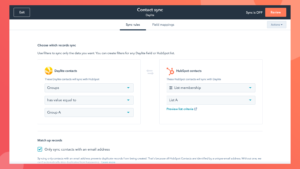In April, we told you about the Global Search Shortcut, a handy way to quickly look for stuff in Daylite. It takes you to the Search field bar where you can type any text contained in the Daylite object you want to find.
Search creates a list of objects based on one search criterion. Want to search based on two or more criteria? Use Daylite’s filters. And if you regularly need to revisit this list, especially to see what’s changed, you can save your filters as Smart lists.
Let’s use a couple of examples to better understand their usefulness..
Let’s say you want to create a list of all your contacts based in New York who are prospective customers. You habitually tag such contacts using the keyword “Prospect.” You would filter your contacts so that the only ones that appear in Daylite are the ones in which the Address field contains “New York” who you’ve tagged with the keyword “Prospect.” Any contacts that don’t have “New York” in the Address field AND the Prospect keyword do not appear in the list of results.
To routinely view the filter’s results, you don’t need to recreate the filter each time. Save yourself some work the second time around (and later) by using the filter to create a Smart list. Daylite rebuilds the list each time you use it so that, for instance, it no longer shows contacts as prospective customers if you removed the Prospects keyword after converting them into actual customers. Daylite automatically puts Smart lists in the sidebar. You can also put that list in the favourites by dragging it out of the sidebar and dropping it in the toolbar.
Here’s another instance. Think sorting music by genre in iTunes. Once you add new music to your iTunes, the songs will automatically be placed in the genre associated with the song. Say your in the mood for some alternative music. You can sort your music by genre and away you go. The same goes for Daylite smart lists. Once you add new information to Daylite (as long as it meets the filtering criteria you set) the list you created will populate with the new information. When an object that previously matched the criteria of that list changes then the information will leave on it’s own. In short, filters are a great way to manage your data for you so you don’t have to spend tons of time sorting large amounts of information.
We’ve created a great video that shows how Smart lists work. Check it out for more great tips.


